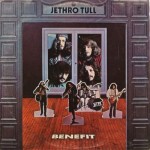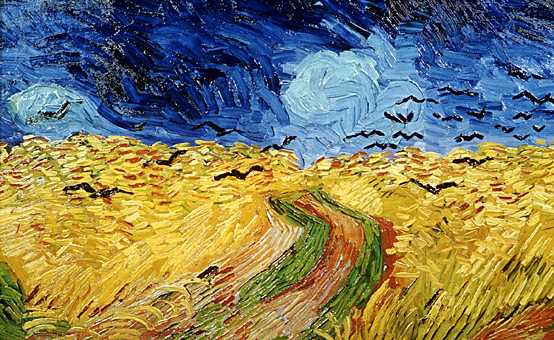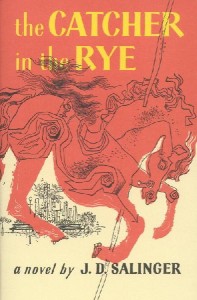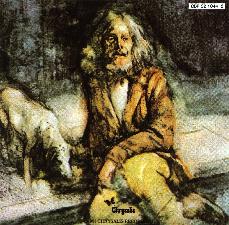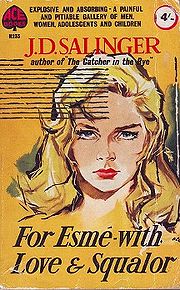It was 42 years ago, today, that Jethro Tull’s third album, Benefit, was released. I wrote about it (and many other things) over the course of a productive day during the great Snowpocalypse of 2010.
She nodded. “Make it extraordinarily squalid and moving,” she suggested. “Are you at all acquainted with squalor?”
I said not exactly but that I was getting better acquainted with it, in one form or another, all the time…
–J.D. Salinger, “For Esme — with Love and Squalor” (1950)
Spin me back down the years and the days of my youth, as the song says.
April, 1988.
More time has passed since those days than had passed since I’d been born. There has to be a more eloquent way to put that, but I’m having a difficult time coming up with it. More to the point, I am increasingly unable to avoid calculations like this. Why? Because the balance has shifted and, going forward, more years (and things) will have transpired in my life, but few of them will be as indelible. So there’s that.
Everyone talks about how reading The Catcher in the Rye is one of those seminal rites of passage. Now that J.D. Salinger has gone to that big field of rye in the sky, everyone is talking about it all at once. I would be a phony, I figure, not to include myself (and all). For starters, what do you call a rite of passage involving a lot of middle-aged (or older) folks talking about the passing of an author who wrote one of the ultimate rite of passage novels? Indulgent? Inevitable? Ironic? All of the above?
By the time I got around to Holden Caulfield, I was already a senior in high school. Too young? Too old? Just right? For better or worse, I was either too old, or not alienated enough, to feel the full force of Salinger’s operetta of adolescent angst. Of course, I’m selling it short (or am I?), but I’ve heard very few adults whose opinions I admire mention falling under this novel’s spell while revisiting it as an adult. Myself, I couldn’t tell if it was too obvious this book was the result of a grown man trying (diligently, and in that overly mannered, oft-imitated style) to sound like a disaffected but acutely sensitive sixteen year old, or if it’s because he succeeded so thoroughly that, even as a seventeen year old, I wasn’t especially simpatico with his anguished, if solipsistic observations. Which is not to say that his plight did not move me, or that his situation is not, at times, rendered with profound artistry by Salinger.
(This is the squalid, or moving part of my observation: after getting several paragraphs of analysis and personal reflection put down, my power went out for a second, and I lost everything I had just written. Everyone knows, whether they are writing an essay or an e-mail, how indescribably frutrating this can be. Nevertheless, I had to chuckle thinking Salinger’s spirit was taking the piss out of my piece, or else the collective force of so many Holden Caulfield acolytes simply snuffed me out in midstream as a sort of karmic correction. Duly noted, and a discouraging setback but not enough to tempt me to pull a Seymour Glass.)
Perhaps it would be a bit unfair, if mostly accurate to conclude that The Catcher in the Rye is the archetypal novel of adolescent alienation for teenagers/young adults who don’t read a great deal of fiction. Just as there are certain types of movies and music that, through a perfect storm of critical consensus and a groundswell of contagious public approbation, get anointed as authentic touchstones of a particular moment in time (I would say “tapping into the zeitgeist” but I try to avoid using the dreaded z-word if at all possible).
Regarding the almost half-century of silence that followed his initial burst of creativty, Norman Mailer decreed Salinger “the greatest mind to ever stay in prep school.” That is harsh but it is also –based on the available evidence– pretty indisputable. On the other hand, when people hold up The Catcher in the Rye (or even Franny and Zooey) as the zenith of Salinger’s oeuvre, they are overlooking (or more likely, have never read) “For Esme –With Love and Squalor”, in my estimation one of the five best American short stories of the 20th Century. Indeed, what Salinger accomplishes in those twenty-odd pages greatly exceeds the sum total of Mailer’s voluminous, if mostly perishable output. Everything that Salinger didn’t do, or didn’t do convincingly, or didn’t do well enough to reward subsequent readings by a more mature audience, in his canonized novel, he does in spades with this short story. It is a compact, devastating illumination of the cruel machinery we, for lack of a better or more appropriate word, call adulthood. How fittingly ironic, then, that a writer celebrated (and minimized) for being the consummate chronicler of what Pete Townshend later called “teenage wasteland” actually wrote a shattering treatise from the trenches (literally and figuratively) that endures well into a new millennium. Of which, more later.
As it happens, when I first experienced The Catcher in the Rye I was in the early (but intense) stages of what became a lifelong infatuation with Jethro Tull. Which naturally coincided with my burgeoning obsession with all-things progressive rock, which happened to coincide with the release of so many classic recordings on that new-fangled technical revelation called compact discs. It would be near impossible for anyone who didn’t live through those days to imagine a world when you waited for anything: i-Pods and online access have made everything that has ever happened available, immediately.
Back then, waiting for certain Rush, Yes, King Crimson and especially Jethro Tull albums to get their digital reincarnation was like patiently awaiting Moses to deliver a new sonic commandment every other week. The upside of this, of course, was that it was still a time when you had time (you had no choice) to savor and spend time with a new purchase, and by the time you’d (temporarily) exhausted your enthusiasm, you had ample funds to get the next installment. This was also, as many will remember, a time before information itself was a free 24/7 proposition. As such, each trip to the record store was loaded with possibility: you never knew what might have been released, including albums by bands like Genesis and Pink Floyd, that you never even knew existed. And, it should go without saying that the prospect of upgrading scratchy vinyl (or tape-recorded) copies of Beatles, Stones, Doors, Zeppelin and Hendrix albums was something slightly beyond orgasmic.
Anyway, it was during the winter and spring of 1988 that the back catalog of Jethro Tull was being released, a couple at a time, on compact disc. It was around this time, having already devoured Thick as a Brick and still patiently awaiting the arrival of A Passion Play, that I had my first sustained go-round with Tull’s third album, 1970’s Benefit. In April 1988 it was the right album at the right time. Remarkably, it still is.
But before you can fully appreciate what Tull achieves on Benefit, one has to consider (and understand) the brilliant album that preceded it, 1969’s Stand Up. In addition to the handful of gems that still get radio play (“Nothing Is Easy, “Bouree”, “A New Day Yesterday” and “Fat Man”), there were a couple of standard coming-of-age type middle finger salutes to the establishment: “Back to the Family”, which features a blistering guitar coda from Martin Barre and album-closer “For A Thousand Mothers”, where Ian Anderson not only spits on, but laughs at the naysayers. This song is notable for perfecting a sort of “garage flute rock”: once you hear that joyously spiteful noise, this might not sound like such an oxymoron. (And incidentally, if you don’t realize how incendiary and downright dangerous this band was capable of sounding circa ’69, get a load of this.) The two most surprising, and surprisingly abiding, songs are “Look Into The Sun” which Led Zep could have put on their third album (and indeed they may have been listening to this one before taking their somewhat left-field, and awesome, acoustic turn in 1970) and the best song you’ve never heard, the sublime and ethereal “Reasons For Waiting”. But the one that stands out (or stands up, as the case may be) from the rest is the ceaselessly astonishing “We Used To Know.” Check it out:
How many 21 year olds write songs like that? The world weariness of those vocals (not to mention the lyrics) and the masterful subtlety of Martin Barre’s embellishment through the first half make the song ache with longing and arid resignation. But then after the flute solo bleeds into the guitar solo, the song explodes into the clear-eyed appraisal of a man who has fully taken stock of the world, and the reigns of his destiny. As we know now, he never looked back. (A few quick words about that guitar solo: more than a few folks, including Ian Anderson, have noticed that The Eagles’ much more famous “Hotel California” seems to have borrowed more than a little from “We Used To Know”. Personally, I think it’s a tough case to make as the two songs are so different, but this does present an opportunity to lament the fact that Joe Walsh, lovable rascal that he is, would be easily identified by approximately 100% of people who know anything about rock music, while Martin Barre might be recognized by one in ten, and that is being generous. Such is life, and don’t weep for Mr. Barre who can wipe his own eyes with the piles of money he has earned. Joe Walsh, who left his talent and most of his brain cells in that holiday weekend of excess called the ’70s, endures as an avatar, and casualty, of that era: he is the coke-stained hundred dollar bill that says so many things about a time and a place where certain people did certain things because they quite simply could afford to. Mr. Barre, on the other hand, is a vintage Jaguar –pronounced Jag.U.R.– that may have neither the flash or immediacy of newer, more colorful models, but discerning eyes can assess its value, and class, with little difficulty. In hindsight, listening to him in song after song after song, it becomes increasingly clear that even some of the most accomplished –and celebrated– guitarists of the ’70s were using crayons while Barre had already figured out how to use water colors.)
So where were we? Ah, 1970. The growth evidenced between Tull’s blues-drenched debut and the follow-up, only a year later, is unequaled by any other rock band’s first and second albums. This is in no small part due to Barre’s arrival (replacing Mick Abrahams, who lost his battle to co-lead the band and continue down the British blues revue road) and the almost incomprehensible maturation of Ian Anderson’s songwriting proficiency. To the band’s credit, their ambition knew no bounds, and part of their strategy for the third album was to recruit John Evan to agument the sound with his considerable piano (and organ) skills. It was a move that paid substantial dividends, immediately evident on the first song, “With You There To Help Me”. Evan’s welcome presence is in full effect on the deceptively simple, almost waltz-like “Alive and Well and Living In“, which details the dynamics of a failing, probably abusive relationship. The flute and acoustic guitar bely the heartbreakingly familiar subject matter (a woman stuck in the rut of on-again/off-again romance with a man who is distant and then demanding, while she is quick to forgive but not quite able to forget), but Barre’s abrasive guitar tone articulates the anger steadily being buried beneath the surface. It’s a cautionary tale for the teenage listener who has yet to embark on a meaningful romance (written by a young man who could not have had a great deal of experience himself) that an older listener can still admire, decades later.
But the centerpiece (thematically, aesthetically) of the album –and a song that absolutely ranks in the upper echelon of the Tull catalog– has to be “Nothing To Say”. If “We Used To Know” grapples with a wary nostaligia that accompanies the resolve to make one’s own way (as an artist but also as a young adult going out into the world), “Nothing To Say” confronts the pressures (of an artist or a young adult out in the world) of conformity or, in Anderson’s case, the expectation that he will embrace the role of countercultural guru, ready to dispense words of wisdom for his young acolytes (a role many artists are quite satisfied to assume, and much more so today than in 1970). Anderson’s ambivalence about this scenario signals, as much as any rock song of that era, that the ’60s are over. Anderson who, to his credit, did not pay much more than lip service (intellectually, lyrically) to the free-love surface level ethos of the festival-flocking hippies, takes aim at both sides of the system and espouses a creed of personal responsibility. What at first might be read as a surly refusal to take a stand is actually an admonishment that everyone needs to figure it out on their own; certainly Anderson was not willing to be a de-facto spokesman for anything political or otherwise. The world was, in many ways, a mess, but every concerned citizen is personally accountable for finding their way and bringing about whatever change is warranted:
It’s not my power
to criticize or to ask you to be blind
To your own pressing problem
and the hate you must unwind.
So ask of me no answer
there is none that I could give
you wouldn’t find.
At this point, Anderson has dealt with the past (Stand Up) and the present (Benefit); his burgeoning confidence would prompt him to combine those elements in an attempt to grind some axes that probed quite a bit deeper than the typical sociopolitical commentary on offer (then, now). As it turns out he had plenty to say, which brings us to Aqualung and the semi-dreaded concept album, wherein Anderson turns his attention, and lacerating wit, to the institution of organized religion. 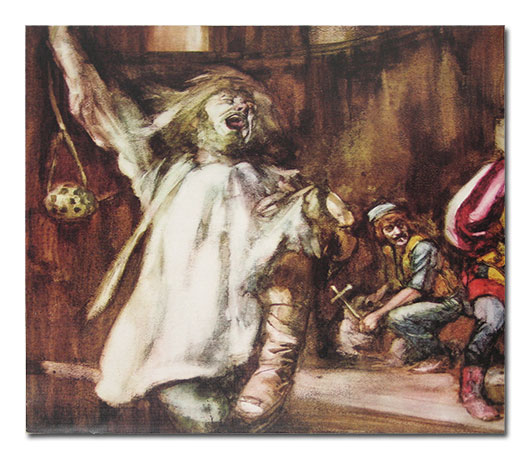 First off, it’s one of the more unfortunate, if trivial, missteps in rock. Naming their fourth album Aqualung was akin to Black Sabbath changing their name from Earth. In both instances, a less appropriate moniker makes the work easier to dismiss. Considering the thematic scope of the album, and the central thesis of how religion affects us all, especially when we are at a young and formative age. It is tantalizing to imagine how much more street cred this album could –and would– have accrued if it were named after almost any of the other ten songs, specifically “Cheap Day Return”, “Up To Me” or “Wind Up” (particularly as a pun for what this expression signifies in British slang–as a comment on the song and the album, and the material, which was sure to “wind up” some listeners). But most of all, this album absolutely should have been named “My God” which, again, would be appropriate on the micro and macro levels.
First off, it’s one of the more unfortunate, if trivial, missteps in rock. Naming their fourth album Aqualung was akin to Black Sabbath changing their name from Earth. In both instances, a less appropriate moniker makes the work easier to dismiss. Considering the thematic scope of the album, and the central thesis of how religion affects us all, especially when we are at a young and formative age. It is tantalizing to imagine how much more street cred this album could –and would– have accrued if it were named after almost any of the other ten songs, specifically “Cheap Day Return”, “Up To Me” or “Wind Up” (particularly as a pun for what this expression signifies in British slang–as a comment on the song and the album, and the material, which was sure to “wind up” some listeners). But most of all, this album absolutely should have been named “My God” which, again, would be appropriate on the micro and macro levels.
In any event, anyone who has made it this far most likely has at least a passing acquaintance with this particular album (perhaps beyond the excellent title track and the radio staples “Locomotive Breath” and “Cross-Eyed Mary”). While the first side of the LP concerns itself with, for lack of a better cliche, man’s inhumanity to man, the second side takes on religion with a righteous indignation that has not been improved upon by many (if any) other mainstream artists since ’71.
I wrote a bit about this one (while attempting a succint overview of the band’s career here) and here’s an excerpt on a couple of songs from Side One: the one-two acoustic punch of “Cheap Day Return” and “Mother Goose” are archetypes of a sort; the kind of whimsical British folk that Tull perfected: the songs seem straightforward and pleasant enough (and they are) but are cut by their topical, and occasionally unsettling, lyrical import. This is Anderson’s calling card, and nowhere is it in better effect than the one minute and twenty-four seconds of perfection entitled “Cheap Day Return”. In astonishingly succinct and effective fashion Anderson deals with his own alienation, offers a sardonic appraisal of his own budding super-stardom (What a laugh!), and his father’s imminent death, all in a song that sounds innocuous as a nursery rhyme.
Side Two is a remarkably ambitious –and successful– attempt to look at the racket religion has degenerated into (or was it always thus?) and after getting some licks in on the clergy, Anderson turns both barrels on the men who have sought to create a convenient God in their own image. Pretty sophomoric stuff, eh? Well, that’s partly the point (more on that in a moment), but what’s remarkable is that these songs have lost none of their power or perspicacity. It still sounds pretty audacious today, but was downright defiant to pen tunes like this in 1971 (check out “My God” and “Hymn 43“, which includes the incendiary couplet “If Jesus saves, he better save himself/From the gory glory seekers who’ll use his name in death). In just one minute Anderson nails, for all time, the opportunistic hypocrisy of the materially rich but spiritually depraved amongst us who compensate (figuratively) for their nagging consciences in the confessional or in the collection basket (“And you press on God’s waiter your last dime/As he hands you the bill”). But on the literal levels, these are the people we all know: our peers, parents and especially our politicians, and Anderson sardonically nails these weekend warriors to their crosses of gold.
He saves the best for last, when in “Wind Up” he recalls being shipped off to church, eventually concluding that God is “not the kind you have to wind up on Sundays”. I can trace the trajectory of when I first heard this album, early in high school, and loving the “hit” songs, to eventually gaining a fuller appreciation of “My God” –in terms of the lyrical import and the inspired way Anderson multi-tracks his vocals to imitate, and satirize, a sanctified choral hymn– and the other songs on the second side. But it wasn’t until college that the full effects of “Wind Up” revealed themselves to the not-so-innocent, recovering Catholic who had served mass as an altar boy only a couple of years earlier:
In your pomp and all your glory you’re a poorer man than me/As you lick the boots of death born out of fear.
I’ll decline to further recall how profound those lyrics seemed to a nineteen year old, but I’ll argue they retain their poetic import even now. Of course one comes to an age where they can see through the self-serving charade and the fake humility and the sickening appropriation of the holy for personal, earthly gains. Et cetera. But this sort of material goes several steps beyond fighting the power or endorsing the punk rock anarchy; this stuff is gospel for a young sensitive soul, alienated by everything and earnestly (sensitive souls are nothing if not earnest) looking for Truth with a capital T.
Which, at long last, brings us back to Salinger. If the holy trinity (sorry) of Tull albums comprised the ideal, if occasionally uncomfortable, source material for making that awkward (but earnest!) leap from adolescence to young adulthood, “For Esme — with Love and Squalor” is among the handful of indispensable short stories (along with Hemingway’s “A Clean, Well Lighted Place”, Tolstoy’s “The Three Hermits”, Kafka’s “First Sorrow”, James Joyce’s “Eveline” and especially Joao Guimaraes Rosa’s “The Third Bank of the River”) that resonate on profound and permanent levels with a certain type of person at a certain age.
Perhaps, as already acknowledged, I simply came to The Catcher in the Rye too late (although, as already suggested, I am uncertain it was capable of working its celebrated charms on me, not because I didn’t relate to Holden Caulfield on some levels, but more because as I read I kept thinking “Yeah? Is this all you got?”). There can be no doubt that I came to “Esme” at exactly the right age: after digesting Catcher and spending many a session (and, the writer would be remiss to overlook, at least one enchanted, and mycologic evening) uncovering the ultimately not so mysterious mysteries of Aqualung. I was, inevitably, an ardent if confused soul quite concerned with “again becoming a man with all his fac– with all his f-a-c-u-l-t-i-e-s intact”.
Like the very best literature, “For Esme — with Love and Squalor” is every bit enjoyable and edifying to adult eyes as it is to, say, the wider eyes of a college sophomore. In fact, Salinger’s achievement is that much more poignant (and devastating) to an older audience who has actually known people who have been wounded or killed in war. But the narrator of this story is reeling from actual experience in the real world, so it resonates to a young reader about to enter it, and certainly a more mature reader who has seen and felt some of those proverbial slings and arrows. If there is a more quietly coruscating image in literature than the narrator lifting Esme’s (KIA) father’s wristwatch, which has shattered in transit, out of the care package, I’m not aware of it. The question, as the story ends, is: does that broken glass represent the narrator’s spirit, or will he rally to once more become part of the world?
This is the question so many (but apparently not enough, considering we are still fighting wars and still taking less than acceptable care of our veterans) young adults grapple with at a crucial time in their lives.
This is the question J.D. Salinger may or may not have answered, in his own inscrutable fashion, once he turned his back on fame –and his fans– and spent the last decades of his life in a golden cage of his making. Whether or not he was quietly desperate, or just quiet, will presumably be answered once those elusive and much-discussed manuscripts see the light of day.
Once it seemed there would always be
a time for everything.
Ages passed I knew at last
my life had never been.
I’d been missing what time could bring.
Fifty years and I’m filled with tears and joys
I never cried.
Burn the wagon and chain the mule.
The past is all denied.
There’s no time for everything.
No time for everything.
–Ian Anderson, “A Time For Everything” (1970)
